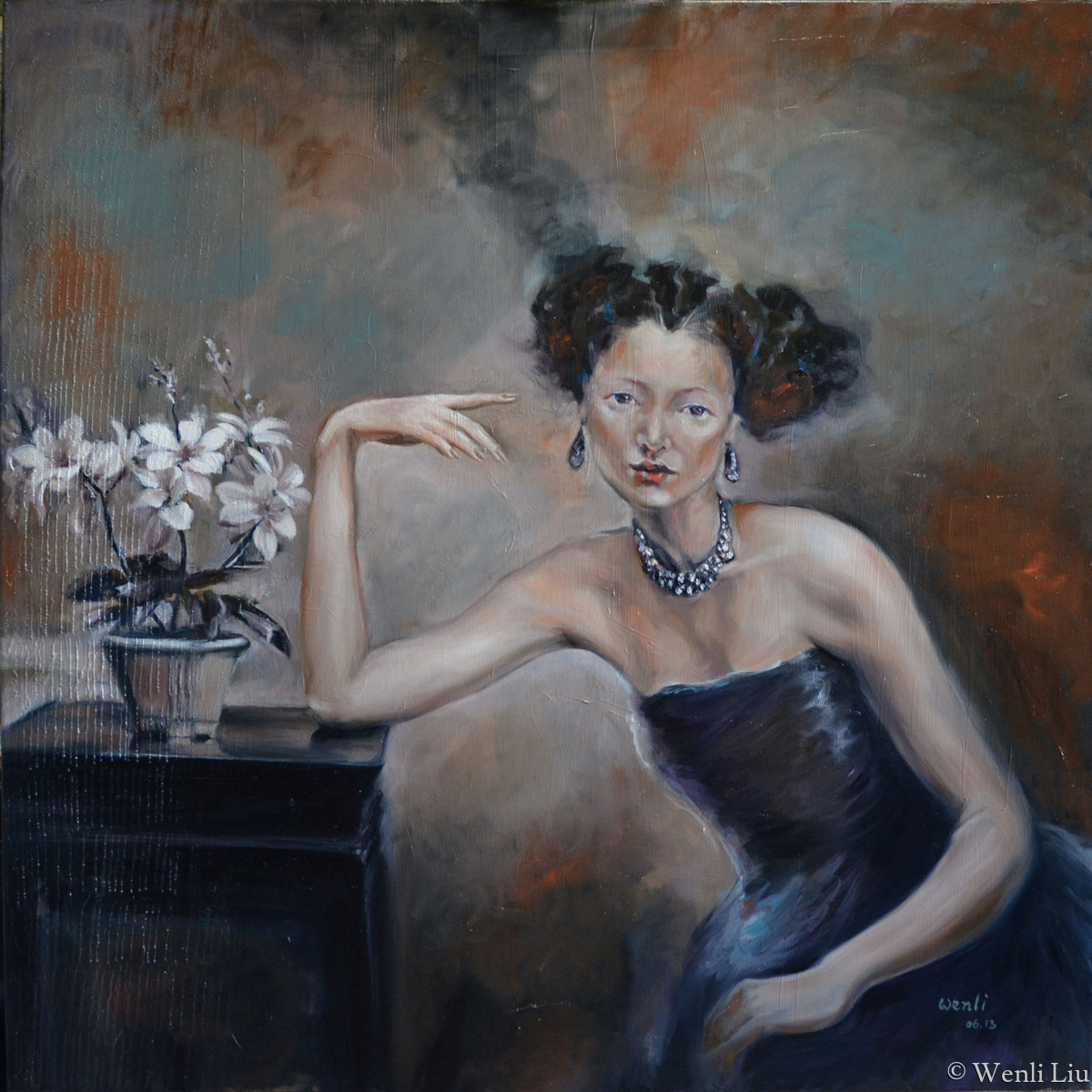

"a laying on of hands" – Ladies in Red, Orange, Yellow, Green, Blue, Purple, Brown."a nite with beau willie brown" – Lady in Red, Orange."positive" – Ladies in Red, Yellow, Purple, Brown."sorry" – Ladies in Red, Orange, Yellow, Green, Blue, Purple, Brown."somebody almost walked off wid alla my stuff" – Lady in Green."my love is too" – Ladies in Red, Orange, Yellow, Green, Blue, Purple, Brown."no more love poems #4" – Lady in Yellow."no more love poems #2" – Lady in Purple."no more love poems #1" – Lady in Orange."i usedta to live in the world" – Lady in Blue."latent rapists'" – Ladies in Red, Blue, Purple."i'm a poet who" – Lady in Orange with Ladies in Red, Yellow, Green, Blue, Purple and Brown."now i love somebody more than" – Lady in Blue with Ladies in Yellow, Blue, and Green."graduation nite" – Lady in Yellow with Ladies in Blue, Green and Red."dark phrases" – Lady in Brown with Ladies in Red, Blue, Orange, Green, Yellow and Purple.Shange also explains that she chose to use the word "colored" in the title of her choreopoem so that her grandmother would be able to understand it.

Then I put that together to form the title." The colors of the rainbow then became the essence of the women in the choreopoem. Then I drove through the rainbow and I went away. I had a feeling of near death or near catastrophe. 1 Highway in northern California and I was overcome by the appearance of two parallel rainbows. In a phone interview conducted with CNN, she explained how she came to the title of her choreopoem: "I was driving the No. Shange admitted publicly to having attempted suicide on four occasions. The 1976 Broadway production was nominated for the Tony Award for Best Play.įor colored girls who have considered suicide/when the rainbow is enuf is a piece of work inspired by events of Shange's own life. has been performed Off-Broadway as well as on Broadway, and was adapted as a book (first published in 1976 by Shameless Hussy Press), a 1982 television film, and a 2010 theatrical film. Shange updated the original choreopoem in 2010, by adding the poem "positive" and referencing the Iraq War and PTSD.įor colored girls. After moving to New York City, she continued work on for colored girls., which went on to open at the Booth Theatre in 1976, becoming the second play by a black woman to reach Broadway, preceded by Lorraine Hansberry's A Raisin in the Sun in 1959. In December 1974, Shange performed the first incarnation of her choreopoem with four other artists at a women's bar outside Berkeley, California. in a way that mimicked how real women speak so she could draw her readers' focus to the experience of reading and listening. Shange wanted to write for colored girls. Her writing style is idiosyncratic and she often uses vernacular language, unique structure, and unorthodox punctuation to emphasize syncopation. Shange originally wrote the monologues as separate poems in 1974. Subjects from rape, abandonment, abortion and domestic violence are tackled. They are the lady in red, lady in orange, lady in yellow, lady in green, lady in blue, lady in brown, and lady in purple. The cast consists of seven nameless African-American women only identified by the colors they are assigned.
#Lady in blue coming through series#
Īs a choreopoem, the piece is a series of 20 separate poems choreographed to music that weaves interconnected stories of love, empowerment, struggle and loss into a complex representation of sisterhood. tells the stories of seven women who have suffered oppression in a racist and sexist society. It consists of a series of poetic monologues to be accompanied by dance movements and music, a form which Shange coined the word choreopoem to describe. For colored girls who have considered suicide / when the rainbow is enuf is a 1976 work by Ntozake Shange.


 0 kommentar(er)
0 kommentar(er)
